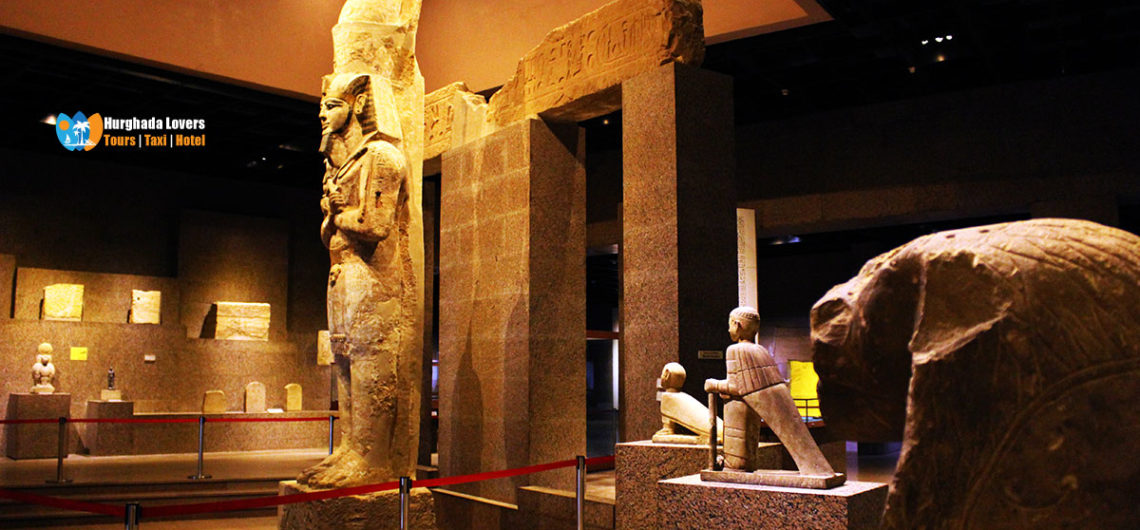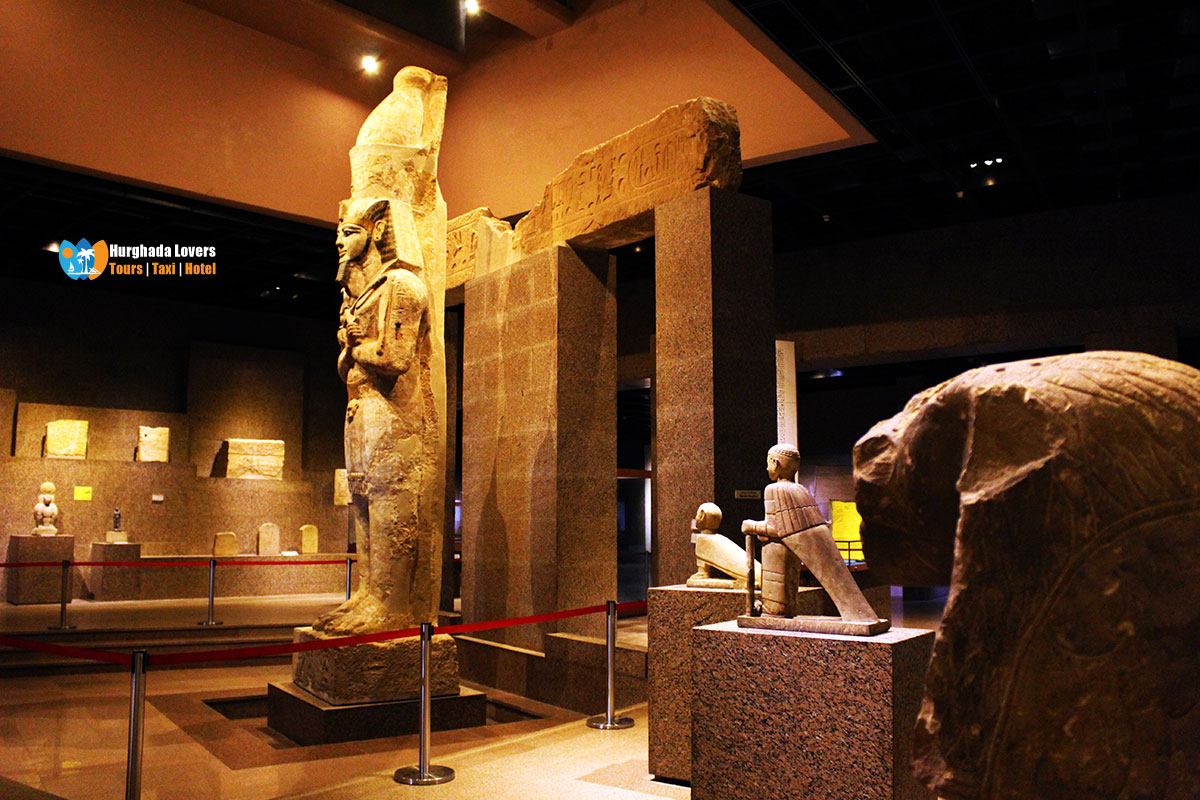Luxor Museum in Egypt | Best Things to Do in Luxor
| Ticket Price | Visit Dates Opening Hours | Facts Ancient Egyptian Art | Map Museums of Egypt | Pharaonic Antiquities & Monuments.
Luxor Museum | A complete map of the interior of the most important Museums of Egypt in Luxor in Ancient Egypt.
what are the most important Pharaonic Monuments on display inside the Museum of the History Of Egyptian Civilization and what are the dates of the visit and the prices of entrance tickets and where it is located & Things to Do in Egypt.
Hurghada lovers Offer Luxury Hurghada to Luxor Tours | El Gouna to Luxor Tours | Makadi bay to Luxor Tours | Sahl Hasheesh to Luxor Tours | Soma bay to Luxor Tours.
Facts about the Museum of Luxor Egypt:
- The museum opened in 1975 in the presence of former President Mohamed Anwar el-Sadat and French President Valéry Jiscard d’Estaing.
- Museum area = 5300 square meters.
- The museum contains more than 380 pieces of rare antiquities from the great Pharaonic dynasties.
- Any archaeological discovery in the city of Luxor, all archaeological contents are transferred directly to the museum to be exhibited in its rooms.
- Museum management provides state-of-the-art lighting techniques for the entire site.
- Next to each room there is a sign with the explanation in more than one language that tells us about the biography of the Pharaonic king or a full description of the exhibited piece.
- All the pieces of King Tutankhamun were entirely transferred to the Great Egyptian Museum, where a private room containing more than 5,000 pieces of King Tutankhamun‘s treasure was provided.
- The design of the museum begins with a garden containing 4 pharaonic statues of King Ramses II, King Amenophis III “Egyptian Pharaohs kings“, King Merenptah and a second of King Amenophis III.
Map of the Luxor Museum from the inside:
The site of the Luxor Museum was chosen to be located directly on the east bank of the Nile and the façade is 55 meters high and 30 meters wide, directly overlooking the Nile, located between the Karnak Temple in the north and the Luxor Temple in the south.
The main entrance door of the Luxor Museum is designed with glass, then access to the main hall on the first floor, where you will see spiral-shaped corridors that make it easy for all visitors to get around without clutter.
The design of the museum’s two-storey building.
Inside, each floor was divided into 6 rooms.
More than 2,200 pieces of Pharaonic antiquities are on display throughout the history of Pharaonic civilization, as well as rare collections from the Coptic and Islamic periods.
The museum contains the Hall of Statues of the Pharaohs and is called the “Hall of the cachette”, which opened in 1991 AD.
Luxor Museum contains the Military Hall (The Glories of Thebes), which opened in 2004, with a miniature model of ancient fishing boats and a model boat containing paddles, sailors and a group of people.
▸ The museum has a room called the Sobek Hall.
▸ You can reach the second floor of the museum by escalators.
What are the most important pharaonic statues in the museum?
The ground floor:
- A large coffin of Queen Taouessert, 280 cm long, 120 cm wide, 150 cm high and weighing 6,000 kg, will be visible in the Sobek Hall.
- A statue of King Amenophis III and the God Sobek in the shape of a crocodile in the Hall of Sobek.
- The granit head of King Amenophis III, you will see it on the right side of the main entrance.
- Granit head of King Sesostris III on the left side.
- A headless statue in black granit of a minister in the form of an ancient Egyptian scribe.
- Limestone statue for the god Amon.
- The statue of the sphinx.
- An obelisk carved in the time of King Ramses III.
- A unique painting showing views of King Ramses III offering offerings to the god Amon Ra and made of sandstone.
- The statue of King Thutmosis III on the throne cut in shist Stone.
- The head of King Amenophis I.
- Bust of King Amenophis II.
- Complete statue of King Amenophis III.
- Bust and head of a complete statue of King Akhenaton.
- Double statue of God Amon and his wife.
- A collection of colorful coffins.
- A group of mummies of kings, queens, honorable class and nobles throughout the history of ancient Pharaonic Egypt.
- A stone statue in the shape of a cow and represents the Goddess Hathor.
- The painting of Karnak, or painting of King Kamose, contains texts in ancient Egyptian hieroglyphics that tell us about the wars of kings and rulers of Thebes against the Hyksos.
- The statue of King Horemheb kneeling before the king of the gods Amon Ra.
- Luxor Museum contains construction measurement tools and a collection of other architectural tools of the Pharaonic civilization.
The first floor:
On the first floor you can see:
- Statues of King Akhenaten.
- A collection of engraved stones, found in the temples of King Akhenaten in Karnak, Luxor.
- Funerary paintings from the Coptic period.
- Pharaonic furniture of the Pharaonic civilization.
- Pottery pots.
- Various jewelry and goldsmithing.
The most important royal mummies of the Luxor Museum:
▸ Mummy of King Ahmes I.
▸ Mummy of King Ramses I.
Piece of distinctive antiques in the museum:
▸ A collection of walls of clay brick buildings of the temple of King Akhenaten (the Talatates)
▸ The statue of Ushabti, made of colored wood, is 23 cm long.
- A 175 cm mummy cover 42 cm wide and made of wood and plaster, found in one of the Pharaonic Tombs found in Thebes, Luxor.
▸ A black and white pottery dish and a collection of antiquities from the Coptic era, especially from the 5th century AD.
A collection of tools and utensils from the Mamluks period, especially from the 14th century AD.
▸ A colored limestone column for King Sesostris I.
- The head of King Akhenaten bears the double crown of Egypt.
Inside Luxor Museum, you will see part of the wall of the Karnak Temple, which has been on display at the museum.
▸ A statue of the goddess Hathor in black granit.
▸ A statue of the goddess Enat.
- A double statue of the God Amon and his wife the goddess Mout, from the time of King Ramses II.
▸ Statue of the head of Queen Toya, from the time of King Sethi I.
▸ A statue of King Ramses XI with the goddess Maat in wax.
Where is Luxor Museum located?
Corniche of the Nile, Luxor, Egypt.
Luxor Museum Visit Dates:
Sunday: 09:00 to 14:00 – 17:00 to 21:00
Monday: 09:00 to 14:00 – 17:00 to 21:00
Tuesday 09:00 to 14:00 – 17:00 to 21:00
Wednesday: 09:00 to 14:00 – 17:00 to 21:00
Thursday: 09:00 to 14:00 – 17:00 to 21:00
Friday: 09:00 to 14:00 – 17:00 to 21:00
Saturday 09:00 to 14:00 – 17:00 to 21:00
Tickets prices for Luxor Museum:
The price of an entrance ticket for a foreign tourist = 140 Egyptian pounds.
The price of an entrance ticket for a foreign student = 70 Egyptian pounds.
The price of an Egyptian tourist entrance ticket =20 Egyptian pounds
The price of an egyptian student’s entrance ticket = 5 Egyptian pounds.
Author & Writer Luxor Museum: Tamer Ahmed Abd elfatah Yousif
Luxor Museum Egypt | A complete map of the interior of the most important Egyptian Museum


